Discover Custom Apparel Startups
Custom Apparel Startups

Custom Apparel Startups
Author: Custom Apparel Startups
Subscribed: 475Played: 6,009Subscribe
Share
© Copyright 2018 ColDesi, Inc.
Description
The Custom Apparel Startups podcast was started simply because we love both the apparel decorating business and the idea that almost anyone, with a small investment and a little dedication, cannot only start their own business but thrive!
Our goal in starting CAS is to help educate apparel entrepreneurs about the business of the business, something often overlooked by people with an idea and a budget, but no business plan or experience behind them. We’ll be talking with the biggest names in the apparel decorating about things that are interesting and useful for all of you. Below are just a few topics we’ll be covering:
Marketing Ideas
Finance and Taxes
Social Media
eCommerce and Shopping Cart Software
Pricing your work
Managing inventory
Equipment and Software Uses
Our goal in starting CAS is to help educate apparel entrepreneurs about the business of the business, something often overlooked by people with an idea and a budget, but no business plan or experience behind them. We’ll be talking with the biggest names in the apparel decorating about things that are interesting and useful for all of you. Below are just a few topics we’ll be covering:
Marketing Ideas
Finance and Taxes
Social Media
eCommerce and Shopping Cart Software
Pricing your work
Managing inventory
Equipment and Software Uses
207 Episodes
Reverse
Episode 203 - How to Compete in a Crowded DTF MarketIntro: The Shop StruggleDTF is booming and more businesses are jumping in.DTF is much easier than older methods like screen printing.Barrier to entry is lower with 'production friendly' equipment under $15k.Full-Digital Apparel that looks, feels and washes great is 'easy' to make.If you're feeling squeezed on price, overwhelmed by competition, or stuck on how to grow this episode is for you.Why It Feels CrowdedCustom t-shirt businesses are more common than even just a decade ago.People have a 'friend' or 'cousin' with a cricut.Customer expectations are all over the place a "Why is this shirt $30 when the guy down the street sells it for $15?".Social media makes everyone look busy, even if they aren't making money.The Good NewsJust because everyone's cousin makes shirts, doesnt mean they are good at it.Most 'side-hustlers' give up or cannot deliver.The business isnt 'easy' so YOU putting in the work will be around when others won't.The barrier to entry to be profitable is still high enough that its not for everyone.You can still produce a high-quality custom logo apparel for the same price or cheaper than stores sell blank apparel.Avoid Common TrapsRacing to the bottom on price.You will NEVER be the cheapest. "There is hardly anything in this world that some man cannot make a little worse and sell a little cheaper."Undercharging because they don't know how to break down costs and margins.Know your numbers!Consider other costs - website, accounting software, credit card fees.No Systems in place to make sure your business runs wellNo workflowsNo pricing structureNo SchedulesNo delegationNo CRMTrying to do it all: artwork, printing, packaging, selling - without delegation or efficiency.Competing the Smart WayFind Your Differentiator: Custom designs? Rush jobs? Better garments? Customer service? Find 1-3 core differentiators and talk about them all the time.Find Your Niche What is your ideal customer or product? Push towards that and spend less time trying to compete beyond.Charge What You're Worth: Because of the above, you can (and should) charge more than others.Tighten Production: Tips to streamline (pre-press setups, batching jobs, designated work zones).Less mistakesFaster deliveryLess wasteCustomer ExperiencePersonal deliveryHandwritten thank yousReorder remindersBirthday / AnniversaryGrowing in a Crowded SpaceDon't be Amazon / Walmart You can't beat the lowest price, but you can offer the best experience / quality.People will want to buy from YOU / Your Business... because you are not the big business.Get Referrals WorkingScript for asking for referralsRemind people againGive/Get programLeverage What You Already HaveUpsells / bundled productBe the best on the blockYou would be surprised on how many people havent truly mastered their craft, be a master. Experiment, practice, play, learn.Invest in an Efficiency (repeat): Set goals for single efficiencies you can invest in (even if it's small.)Additional heat pressesAccounting softwareCRMEcom StoreFinal Thoughts: There's Still Room!You don't need to be the best at everything, just the most dialed-in for your customers.Think efficient and excellent, not big and chaotic.You don't need to be the master of an entire catalog of products, just be fantastic at a handful.If you are struggling to compete with lower priced competitors, consider changing how to are getting your business or what you sell.Only offer premium quality apparelLook for a niche or type of customer that is going to be less price concerned.Purchase apparel from the 'cheap' competition to see how you can offer a better product (and sell against that.)Challenge: What's one thing you can fix in your pricing or workflow this week?
In this episode we're diving deep into one of the most important decisions in DTF printing: choosing the right DTF printer. Whether you're just starting out or scaling up a serious production setup, the gear you choose can make or break your workflow, quality, and profits. We'll break down the different printer types and talk about the real-world usage of each.We're also sharing insider tips on what to avoid, and what else you'll need beyond just the printer to actually succeed with DTF.At the end of the episode we have specific advice tailored for beginners looking to start smart, and pros aiming to optimize or expand.Understanding Printer Types and Key Features Print Width OptionsLetter / A3 Sheet (12-13")Small format sheets for basic transfers12"Ideal entry into roll-to-roll printing24 - 30"Faster production for professional setupsInk SystemsBulk Ink SystemsLower ink costsRequires maintenance knowledgeCartridge SystemsMore reliable for light to medium useHigher cost per printWhite Ink CirculationPrevents settling and clogging in pro setupsIntegrated vs. Modular SetupsAll-in-One PrintersIncludes printer, shaker, oven in one unitSeparate ComponentsGreater flexibility for upgrades and maintenanceBudget Considerations Entry-Level SetupsDesktop Printer + Manual ShakerPros: Low upfront cost, real DTF transfers possibleCons: 10+ minutes per transfer, inconsistent quality, no white ink circulationVerdict: Not recommended for production-focused businesses.Mid-Tier OptionsA3 Size Sheet PrintersPros: Compact size, low costCons: Slow production, not automatedCompact Roll-to-Roll SystemsPros: Automated, less manual labor, better consistencyCons: Higher investment, learning curveVerdict: Roll-to-roll is generally the winner at this tier.Pro-Grade Options24"+ Wide Format PrintersPros: White ink circulation, fully automated, designed for production and ROICons: Highest investment, requires significant space and powerVerdict: Bigger and faster is almost always better for serious DTF operations.Essential Additional EquipmentHeat press(es)Powder extractor or filtration systemEmergency kit for clogs and maintenanceStartup consumables and suppliesReliability and Maintenance Daily UpkeepFollow manufacturer guidelinesMaintain temperature: 60°F – 80°FMaintain humidity: 50% – 70%Keep a dust-free environmentCommon Failure PointsPrintheads: Especially with white ink; discuss preventative maintenance with your vendorPowder Adhesive Curing: Adjust time and temp based on weather and materialWhere to Buy and What to Avoid Choosing VendorsTrusted brands with proven track recordsWho supports you post-purchase?Key Questions to AskHow long have you been in business?What is the warranty?How many printers/customers do you have?Can I see a sample print?Can we do a live or virtual demo?Evaluating Test PrintsFeel and stretch testsWash testsFeedback from existing customers or focus groupsFor BeginnersLook for simplicity, strong support, and learning resourcesAvoid shiny object syndrome; focus on reliabilityStarter kits and bundles can help but verify qualityRemember: It's better to over-invest in equipment than under-invest.For ProsBuy based on current production plus growth goalsDon't expect to abandon other print technologies immediatelySet client expectations if changing print methodsEducate clients on color differences between spot and process printingUpsell expanded color options to lock in clientsTrain staff thoroughly for day-to-day operational changesChoosing the right DTF printer setup comes down to understanding your production goals, budget, and willingness to maintain the equipment properly. Whether you're starting with an entry-level setup to learn the process or investing in a full pro-grade system to drive your business forward, focus on reliability, vendor support, and scalability. The right choice will save you time, reduce frustration, and allow you to confidently produce high-quality transfers for your customers. Be sure to check out ColDesi.com and learn more about how Direct to Film printing can help your business thrive.
In this episode of the Custom Apparel Startups Podcast, host Marc Vila is joined by Michael Palme and Austin Gordon from Taylor to discuss how direct mail can be a game-changer for custom apparel, sign, and promotional product businesses. While digital marketing gets a lot of attention, direct mail remains a powerful and underutilized tool for targeting new customers, retaining existing clients, and cutting through the clutter of online ads.Michael and Austin break down how direct mail works, how to effectively use data to reach the right audience, and how you can integrate it with digital advertising for even greater results. Whether you’re a startup looking to establish your brand or an established business aiming for the next level, this episode will give you practical strategies to expand your reach and increase sales.Topics Covered in This Episode:✅ Why direct mail still works in a digital world✅ How to use data to target the perfect audience for your business✅ The cost of direct mail—how much should you budget?✅ How to track results and measure ROI✅ The best types of mail pieces for apparel and sign businesses✅ Combining direct mail with digital ads for maximum impact✅ How to start a direct mail campaign—step-by-step guide✅ Common mistakes to avoid when using direct mail marketingListen now and learn how to use direct mail to take your business to the next level!📩 Have questions or want to connect? email us at marketing@coldesi.com.
In this episode, we dive into the exciting world of entrepreneurial spirit with a focus on launching a custom t-shirt business. We'll explore a practical, step-by-step guide designed for beginners eager to make a mark in the t-shirt industry, even with little to no prior experience. Whether you've dabbled in t-shirt sales or are just curious about this creative venture, this episode is your gateway to starting a successful side hustle immediately.We’ll dissect a downloadable document that outlines six actionable strategies that have proven successful for startups across the country. From leveraging your personal network to making smart use of social media and local community engagement, we cover all the bases to ensure you're well-equipped to start generating business right away.Join us as we reveal the secrets to turning referrals into sales, using everyday interactions as promotional opportunities, and why something as simple as a well-timed text message or a social media post can be incredibly effective. If you're ready to start making money by selling custom t-shirts, this episode will provide you with the knowledge and inspiration to hit the ground running. Tune in to transform these insights into action and start achieving your dreams today!
In this insightful episode, we sit down with Trevor and Trent Walden, the pioneering duo behind the Walden Bros., an Alaskan t-shirt shop specializing in Direct to Film (DTF) printing and embroidery. As they navigate the intricacies of the customization industry, the Walden brothers share their journey of transforming an idea to a successful family business.Key Discussion Points:Taking ideas and going for it: The Walden Bros. recount their initial days, emphasizing the importance of good ideas, family and hard work.Taking Risks: Trevor and Trent delve into early wins and losses that helped make the business it is today.Building a Brand: The brothers explain their approach to creating a strong brand identity that resonates with their customers.Customer Engagement: They highlight strategies for engaging customers and personalizing experiences to foster loyalty and repeat business.Challenges and Triumphs: The conversation also covers hurdles they've faced, how they've overcome them, and the lessons learned along the way.This episode not only provides a behind-the-scenes look at running a successful customization business but also serves as a guide for entrepreneurs eager to carve out their own niche in the competitive industry of bespoke products. Join us as Trevor and Trent Walden lay down the blueprint for aspiring customizers looking to expand their horizons.
In this episode, we delve into the exciting world of Direct to Film (DTF) printing and how you can transition your screen-printing shop to embrace this innovative technology. We'll start by explaining what DTF printing is and why it's gaining popularity. Next, we'll break down the investment costs involved, giving you a clear picture of what to expect financially.We'll explore the wide variety of materials you can print on with DTF and detail the essential equipment you'll need to get started. Wondering if you should keep your screen-printing machines?We'll weigh the pros and cons to help you make an informed decision.Additionally, we'll discuss other important factors to consider during the transition, provide insights into the current DTF market, and guide you on how to obtain a sample DTF print to see the quality for yourself. Whether you're a seasoned screen-printer or new to the industry, this episode is packed with valuable information to help you navigate the switch to DTF printing. Tune in and learn how to expand your printing capabilities and stay ahead in the competitive market.
In this insightful episode of Custom Apparel Startups, we welcome Howard Potter back to discuss the nuances between Direct to Film (DTF) printing and traditional Screen Printing. With his deep-rooted knowledge from A&P Master Images, Howard breaks down the pros and cons of each technology, helping entrepreneurs make informed decisions tailored to their business needs.The conversation begins with an overview of each printing method’s technical demands and operational scopes. Howard elaborates on the initial investment costs, ease of operation, and scalability potential of DTF and Screen Printing, giving listeners a comprehensive comparison.Highlighting key factors like print quality, production speed, and cost-effectiveness, Howard shares his firsthand experiences with both methods. He discusses how DTF offers flexibility and precision with lower setup times, making it ideal for small to medium runs.Conversely, Screen Printing is celebrated for its economic benefits in large batch productions and its lasting print quality.Further, Howard addresses common misconceptions and challenges associated with each method, such as the steep learning curve of Screen Printing and the upfront costs associated with transitioning to or starting with DTF.Listeners will come away with a clear understanding of which printing method might best suit their current operations and future growth plans, armed with Howard Potter’s practical advice and industry insights. Whether you're a startup in the apparel industry or looking to expand your existing setup, this episode serves as an essential guide to mastering these popular printing techniques.
In this compelling follow-up episode of Custom Apparel Startups, we're delighted to welcome back Howard Potter, of A&P Master Images, for another deep dive into the world of custom apparel. This time, Howard sheds light on the troubles encountered when starting a t-shirt business and shares invaluable advice for both new and established entrepreneurs in the industry.Kicking off the episode, we tackle one of the most daunting questions for newcomers: "Which machine to buy?" We stress the importance of broad research and caution against getting tunnel-visioned on a single technology. The landscape of apparel printing is vast and choosing the right equipment is crucial for your business's specific needs and goals.Growth is a central theme of our conversation. Howard underscores the necessity of forward-thinking, particularly in terms of spatial planning. Anticipating future expansion is vital; many businesses struggle because they run out of room or fail to utilize their current space efficiently. He offers practical tips on scanning your property and equipment regularly to identify items that can be repurposed or removed, thus making way for essential upgrades or additions.Howard also introduces the concept of "temporary fixes" for immediate problems, but he warns against relying on these for too long. The discussion moves towards a critical analysis of production, time, and space utilization. He advises that operating at 95% capacity is a clear sign that expansion is overdue. Ideally, businesses should start thinking about improving their space or equipment when they hit the 70-75% threshold to avoid stagnation and ensure continuous growth.Beyond the technical aspects of running a t-shirt business, Howard emphasizes the foundation of any successful venture: providing excellent service, treating people right, creating outstanding products, and committing to education and transparency. These principles, he argues, are non-negotiable for long-term success in the custom apparel industry.This episode is a treasure trove of insights for anyone looking to navigate the challenges of starting or expanding a t-shirt business. Howard Potter's expertise and candid advice make it a must-listen for entrepreneurs eager to make their mark in the world of custom apparel.Here is the list of tips for growing your business:Get the right equipment for YOUR businessConsider the space you have to work and make sure you have room to growIf you are not using things or running out of room, be sure to scan your space and see how you can improve efficiencyConsider your % output / % time / % spaceIf you are at 95% production / space ... you need to expandReally you should be improving space / equipment at 70-75% rather than waitingSimple rules for growthProvide great serviceTreat people rightCreate a great productEducate your customerBe transparent
In the latest episode of Custom Apparel Startups, we are excited to feature Howard Potter, from A&P Master Images, who brings his wealth of knowledge to the table on the topic of Direct to Film (DTF) Printing. Our discussion, " What You Should Know Before Buying a DTF Printer," covers the A to Z of preparing to make an informed purchase of a DTF printer for your business.Howard emphasizes the paramount importance of conducting thorough research to identify a trustworthy company. It's crucial to partner with a company that not only sells you a printer but also supports you throughout your printing journey. Equally important is considering the space your operation has available, as DTF printers come in various sizes and have specific space requirements for optimal operation.He advises potential buyers to request samples from providers. This step ensures that the print quality meets your business's standards and expectations before making a significant investment. Additionally, Howard stresses the importance of investing in quality supplies, including inks and films, to guarantee the best output and durability of your printed products.A central part of our conversation revolves around the challenges businesses might face, particularly concerning time management and staffing. DTF printing, while lucrative, demands careful planning and allocation of resources. Howard shares insights from his experience, noting that even the largest units are not overly complicated in terms of power requirements, which can be a common concern.Highlighting the potential of DTF printing, Howard reveals an impressive fact: it is possible to generate more than $500,000 in revenue with a single DTF printer in a year. This statistic not only underscores the efficiency and profitability of DTF printing but also serves as a powerful motivation for businesses considering entering the space.This episode is packed with invaluable advice for anyone looking to venture into DTF printing or expand their existing operations. Howard Potter's expert insights provide a roadmap for navigating the complexities of purchasing a DTF printer, making this episode an essential listen for those in the custom apparel industry.Here are the top considerations before purchasing a DTF Printer: Find a company you can trust Consider the space you have to work with Get samples Look for a company that provides quality supplies with their machines
Mike Angel shares his expertise in apparel decorating, focusing on the cutting-edge technique called direct to film printing, or DTF printing for short. This method has completely revolutionized the world of apparel decorating, offering numerous advantages over traditional methods. It is not only faster and easier, but also more cost-effective and versatile.With a DTF printer, you have the flexibility to take on both small and large-scale projects. You can effortlessly create and print the same design on a wide range of fabrics, allowing for endless possibilities in customization. Unlike other technologies, DTF transfers require lower temperatures and shorter press times, making it ideal for more delicate fabrics as well as durable fabrics.DTF prints boast exceptional color and detail, surpassing many other apparel decorating methods for apparel decorating with photo-realistic images, and the prints are highly durable, withstanding stretching and washing with ease.
In this episode of the CAS Podcast, we're thrilled to welcome Mike Angel from ColDesi, the brilliant mind behind ClickWear and the ColDesi OnDemand services. Mike takes us on a deep dive into the world of selling online, particularly through Shopify, and how ClickWear is transforming the custom apparel business by streamlining product creation and order management. We'll also explore the comprehensive solutions offered by ColDesi OnDemand, designed to support businesses in offering customized products without the hassle.Shopify is a leading e-commerce platform that enables businesses of all sizes to set up their online stores and sell products. It's known for its ease of use, scalability, and comprehensive features that cover everything from inventory management to payment processing, making it an ideal solution for entrepreneurs looking to start or grow their online sales.ClickWear is a Shopify app developed by ColDesi that revolutionizes the custom apparel industry. It allows store owners to easily create and sell custom-decorated products online by simplifying the design and order fulfillment process. ClickWear streamlines operations, enabling efficient management of product customization and orders directly from the Shopify interface.https://coldesi.com/clickwear-a-shopify-app-for-the-custom-apparel-business/ColDesi OnDemand offers a robust solution for businesses looking to offer custom apparel and products without the need for inventory. This service provides the technology and support for on-demand production, from printing to shipping, allowing businesses to focus on design and sales while ColDesi handles the fulfillment. It's a scalable solution that fits a range of business sizes and needs, from startups to established brands looking to expand their product offerings.https://coldesi.com/ondemand/
IntroductionSmall business owners in the customization industry are facing unprecedented challenges due to rising prices. This resource guide provides practical strategies to help your business thrive in a changing economic landscape.Market Research and Competitive AnalysisResearch competitors and trends - Price shop around and see how you REALLY are in the market. Also ask about 'hidden' fees. Set up fees, art fees, delivery, etc. Do you have a fee to set up my logo?Do you deliver or do I pick up? Fees?I am trying to budget this all out, what other costs should I expect to make sure I allocate the right money?Understand customer perception - ask other business owners you know if they have had price increases. How did they deal with them? How large were they? Define your pricing strategyDo you want to be the price leader? Keeping it SimpleAvoid complex financial details.Don’t break down the cost of your ink, paper, deliveries etc. This leaves room for holes in your pricing strategy. Just keep it simple - 'my costs are up, my retail is up' Offer added value.Confident price change communication.Transparency MattersBe open about price increases.Consequences of non-transparency.If you try to dance around the truth customers may see this as dishonestyInsights from Harvard Business Review."Call the action a price increase, not a price adjustment, a price change, or another euphemism. While this may seem like a small thing, euphemistic messaging can cause serious harm, fraying the relationship with loyal customers." Many consumers are keenly aware of overall economic conditions, so when you tell your customers you’re raising prices, it just confirms their expectations, and most accept it.Use clear language.Postpone price increase for certain customers - let them know it’s coming, and why you are postponing for them. Customer Satisfaction is #1Prioritize customer satisfaction first.Satisfied customers accept higher prices.Price-sensitive customers are likely to stay if satisfied. If they still won’t stay with higher prices, you have to decide if they are worth it.e.g. a low maintenance customer may be worth keeping at a lower margin. However a customer that is constant trouble, no referrals, frequent returns, frequent complaints… might not be worth it.Additional Pricing StrategiesTarget new customers - Go after more unique niches or higher end customersOffer contract discounts - Can you get customers to commit to months or a year of service. e.g. make updated uniforms for their business every season, or update signs on storefront for each holiday. Create bundles - price of shirts is up, but if you do shirts AND hats you get a discount. Selective price increases - only price increase certain items. Maybe your low-price leading items stay the same, but your upsells increase. Handling Customer ObjectionsAddress objections with confidence Brainstorm with your team or other business ownersPractice the conversationsUnderstand most customers will understand why this is happeningConclusionYou empower your business when you control your prices. If you are racing to the bottom or let fear control your pricing, you will eventually start suffering consequences. Increasing pricing doesn't mean you are greedy, you are doing your best to stay in business and reach your financial goals.
When it comes to growing your customization business we often talk about 'finding a niche.' What is a product / customer that you can focus on. This could be new moms, or local small businesses or tourists. However, you will find a point where growing that business becomes harder. This is why you will find a candle company that starts selling soaps, or why Bath and Body works sells 99 different ways to make your house smell good.Diversifying your product lines is a great way to level up your business and make more moneyYou can sell to current customersYou can find a new customer baseYou can become more stable (as one product line slows down, another might grow)Types of business diversificationProduct diversification: you primarily sell clothing but you want to expand into other items that will create value for your customer like home goods and accessoriesMarket diversification: you have a local business and start selling online or you open a new location across townIndustry diversification: take you knowledge to a different industry or target a new nicheService diversification: you may only offer finished products, but may want to start doing training on how to make those productsMerge or Acquire: a business that has a different product, service, market or industryWhy you would want to diversify:Want more revenue.Core business is in decline or getting saturated.Less economic riskIncrease competitiveness – offer a wider range of products to attract new customers and reach new markets that competitors can't or don'tExamples:Amazon used to be an online bookseller, then moved on to sell video games and other multi-media and before long, they sold computer electronics, software, homeware, toys, and moreApple was on the verge of bankruptcy in the 90's and launched the iPod and iTunes software and a few years later the iPhoneSteps to Diversify:Do your research – have your customers suggested diversifying? Are they asking for more products or services? What can you do better than your competitors in your current or new markets? What type of diversification would suit your business?Assess your risks – while diversifying can help generate sales and increase your market share, you have to find a crucial balance between finding the time and resources to focus on the new venture without neglecting your core business. Diversifying with similar products in a familiar market may carry less risk than developing a brand new product for an unknown market, but both would create a safety net which will allow you to recover if one of your products or services fails.Audit your resources – what do you have and what do you need to invest inPlan – in many ways it is like starting a new business. You will need to understand your new market, your customers, competitors, and the new dynamics just as you would for any new business*What does your equipment do?**You have an embroidery machine. a) Do you sell hats? b) Patches? c) Uniforms?You have a DigitalHeat FX printer? a) Ever used hard surface paper? b) Printed on cardstock?*What adjacent equipment you can add?**If you have a a sublimation printer, adding a hat press is an easy upgradeIf you do digitalheat fx, might be good to ad a sub printer or a cutterIf you do embroidery, going to a cutter and press.
How do you choose the right t-shirt?You are looking to start or grow your custom apparel business. There are a ton of challenges with choosing the right equipment, making sales, pricing your apparel and so much more. However, a topic not often discussed enough is the apparel you use.Choosing the right blanks is a core part of your success. This is similar to a great chef. If you learn about great chefs, it's not just about the best pans and recipes, but also about the best ingredients. More so, it's about the best ingredients for their particular recipe.The same thing applies to the custom apparel industry. You must pick the right apparel for your business. The idea of 'what is the best t-shirt' is a fallacy, just like the question of 'what's the best chocolate for a dessert'. It depends!In this podcast we will discuss the idea of 'the best shirt' with an industry expert Mike Putnam. Mike has been in the apparel industry for over 30 years working in the apparel, sportswear and equipment industries.Some of the questions we’ll answer in this episode include:What is the best technology for your custom apparel business?What type of T-shirts should you sell?What problems should you expect?How do you get past these problems?Why is the idea of a ‘best’ shirt is a bit of a fallacy?Your processYour TechnologyYour customers’ needs (timeframe, color, quantity)The retail price you sellWhat technology should you be printing with?Screen printingDirect to FilmWhite TonerDTGSublimationWhy do some shirts fail and others succeed in printing (even when they are the "same" material)?How do you decide the best shirt for your business?
Starting A Side Business And Growing To Full TimeEveryone is looking for a way to make more money, achieve financial independence, and enjoy the work they do. One of the ways people accomplish this is by starting a side hustle, and potentially growing it to a full-time gig.But how do you do this successfully? If you are brand new, how do you get started? If you already have a side hustle, how do you take it full time?In this episode we are joined by Amir Bavi, a ColDesi employee and customization business owner. Amir has taken the journey from side business to full time and back around. It’s all about YOUR personal journey and we are here to help.Here are the steps to starting and growing your side business.You have an idea, so what’s next?Put it in writingConsider WHO your customer isConsider WHAT you will sell themDetermine HOW profitable your products arePick WHERE you will do the workSchedule WHEN you will do the side hustle workWrite down WHY You are doing this (and never forget it!)Other topics covered in this episode:What are the steps to getting started?What should you watch out for?Once you get started, how can you make sure you don’t grow too fast or slow?How do you know when you are ready to go full time?How do you stay motivated?Did you ever have a time when you wanted to give up?#1 Tips for success
Many small business owners get into their business with an idea, rather than a full plan. You want to make t-shirts or print signs. You know it's profitable and you've already got some referral business. It's not that hard to make some money and get overwhelmed with business. What IS hard is growing your business to achieve your dreams and goals. One of the first steps to understanding how to create a great marketing plan (that will lead to success) is understanding the 4 Ps of marketing. In so many words, it's understanding your businesses goals, so you can make truly educated marketing decisions. So, what are the next steps for your marketing?Should you start a TikTok?Should you do local paid advertising?Would doing google ads be a good idea?Is renting a booth at a farmers market going to be profitable?Is hiring a marketing firm/person the right move?Anyone who tells you they have the answer to these questions is wrong. None of these can be answered correctly without knowing your 4 Ps. So let’s get to them!All Marketing revolves around the 4 Ps:Product:The number of products categories, product lines and variations your company sells.For example:Product Categories: Workwear, SignageProduct Lines:WorkwearMen’s WorkwearWomen’s WorkwearSignagePrinted Graphic DecorativeIndoor SignsProduct Variations:WorkwearWomen’s Short Sleeve t-shirtWomen’s Long Sleeve t-shirtWomen’s PoloHats (One)SignageRoom Names / BrailleRestroomsDirectoriesMapsInstructions (wash hands)How a product is presented or packaged and servedHow will your customer place their order?ecom, call in, email, in-person.How will your customer get their product?Personal delivery, by mail, customer pick up.Do you install or instruct?Price:What is the fair market rate of each item sold?How do customers pay? Can they pay online? Deposits? Pay in full?Promotion:What channels are you currently utilizing?New business: Nothing because your business hasn't started.Existing business: Google My business? Social Media? Word of Mouth? YouTube? Paid Advertising?What channels are you capable of utilizing?Can build a website? Can you hire someone to build one?Can you afford a paid advertising budget?Are there live events you can attend?Do you have a personality for social media/YouTube?Place:Are your products sold online? In store? 3rd party?Do customers need to be local?Are your products only sold with your physical presence? (e.g., signs)Is there anywhere you won’t / can't sell?BONUSOnce you have 4Ps then you need to look at your demographicsWhat is the face of your customer or their profile / avatar?e.g., local small business owners - Dentists, Drs, Pharmacy, Interior Designers, Real Estate, Golf CourseNow that you have the 4Ps and your Demographics. You can start answering questions: Should you start a TikTok?Should you do local paid advertising?Would doing google ads be a good idea?Is renting a booth at a farmers market going to be profitable?
What is a social media strategy?A social media strategy is an outline or plan of your social media goals, how you will achieve them, and how you’ll track metrics. Social is talked about all the time in business, but do you need it? If yes, then how will you use it? This episode is all about finding out what is right for your business. Why having a presence on social media is important for small businesses:Maintains and builds relationships with customers you already haveGrows brand awareness and familiarityBuilds trust with new and current customersBuilds engaged communitiesTurns customers into advocates (gain mentions, comments, likes, tags, etc.)Gives your business a chance to respond to any negative feedbackAnother channel to promote products or servicesHow to set up a strategyDetermine a goal – make sure it’s measurable/realistic for your business (ex: increasing email sign ups, increase web traffic, generate sales/leads, etc). Understanding and researching your competition can help you.Understand your audience – Know the basics about your target audience like age, location, income, interests, etc. Which can all be found using that platform’s analytics tool. This can help you build better strategies and goals based off that data. Also know things like what kind of content do your customers engage with? What accounts do your customers follow? What do they like/share?Get to know your competition – Complete a competitive analysis to help you understand what your competitors are doing, what their strengths/weaknesses are. Or keep an eye on their pages, search relevant keywords and how your competitors rank, etc.Start Implementing Your StrategyDetermine which platforms you want to use and are relevant to you (Instagram for reels, TikToks for short videos, Facebook for customer service, etc)Set up your profiles (use consistent branding like logos and brand colors, fill out bio completely, use high-quality images, include keywords people may associate your business with, etc)Create a social media calendar to help organize content ideas, scheduled posts, and maintain consistencyHave your first couple of posts planned out and ready to go liveWho are you selling to? What is your niche?Should social media be a place for you to sell, or just display your products?What would you be able to show off?What do you WANT to do on social media?Learn about your potential audience / customersDoes your audience make purchasing decisions from social media?Can you reasonably work with your customers or influencers to promote your product?Which platforms make sense for your business?Research your competition or other similar businessesWhat are they doing?Do you want to do what they’re doing or something different?Determine your strategyDo you want to sell online?Do you want to have customers find you on social?Are your pages for building trust?Are your pages just an online portfolio?Define your brandWhat do you want to look like?What is the personality of your brand?Who is your audience?Set up accounts / profilesImagesDescriptionsInitial PostsCreate a social media calendarWhen will you post?What will you post?Will you go live?Collaborate with othersEngage with people in commentsConnect with customers on their social accountsCross-promote when possibleFollow and connect with potential influencersExperiment with new ways to engageContestsAsk opinions (This or that? Which is your fav?)Boost posts (pay to get more views)Do you have customers that can promote your pages?e.g. if you work with a school maybe do a # contest for free swage.g. if you work with another small business, cross-promote each other or share a contest. “Win X from me and Y from them.”Track performanceBE PATIENTLook for interesting winsTry to re-create what has worked beforeExtra Social Media Tips/ IdeasAfter your social media accounts are created, keep a few things in mind:Experiment with style of content: Post polls, stories, contests, cross collaborations (mention nails), boost posts, customer success stories.Don’t post too much or too little. One can seem annoying and overbearing while the other can seem lazy or like the brand doesn’t care.Get your team on social media, which helps with keeping track of any messages, mentions, or comments.Search popular hashtags/ keywords to use in written and video posts.Using Social Media for business isn't just as simple as posting cool pictures and getting a million followers. People who have 'gone viral' as a rule didnt get there by accident. They spent a ton of time interacting with the platform, creating content, posting like crazy and working hard.Make a smart business decision on how YOUR business will use social media and go for it!
Financing is an important part of starting and growing a business. However, there are a lot of misconceptions and confusion. Many people only have experience financing a house, car, or a new couch. Yet there is a whole world of financing business equipment and software.This episode discusses financing for business and answers the most frequently asked questions.Why do businesses finance equipment?Utilize banks money to startKeep current liquid money on handTax benefitsTime value of moneyCan a new business finance?Yes!You can use personal creditWhat if you don't have perfect credit - should you finance? What if the rate is high?Start now, or don't startRisk and rewardDo what you gotta doWhy not just use a credit card?Installment vs revolving creditSave your credit card for quick purchase / pay off like supplies or blanksDon't use personal revolving credit lines for businessIsn't interest bad?If you can make more money than the interest, you winTax benefitsBank loans cost money, that's the way it works. They are in business too.Better to do something than nothing to winWhat's the finance process like?ApplyReview credit and terms with agentAccept, sign, deliverWhat's financing vs leasing?What if someone has a lot of other questions?Isn't debt for suckers?Most businesses have debtYou buy a house with a loan for the long-term benefits (equity)Is a car loan for a new and reliable car better than paying cash for a car that will break down?Financing: assets vs liabilityA machine for business is different from a carThis isn't just adding to your bills but giving you opportunity.Tax benefitsYou own something of real value vs taking on debt for a vacation or new tvOverall, financing isn't complicated, but it feels scary. So is starting a business or buying a house. Those who take the risk are the ones who can be rewarded.Learn more at https://coldesi.com/financing-options/
2023 is here and what’s in store for YOUR business. Mark and I have been reading around to learn what problems the 'experts' say small business owners will run into. We then put our heads together to consider how these affect the customization business industry.So here we go... let’s get ahead of 2023 with expected challenges and resolutions!Supply Chain Issues – There will still be issues with getting supplies, and it shouldn’t be a surprise anymore. Since 2020 everything from toilet paper to cars has seen the effect of backorders & supply chain issues.What this means for youStock up, Stock up, Stock upHave backup plans, especially for apparelDon't procrastinateInclude in communication to customers*Accelerated Digital Transformations** - Changes are happening faster than ever. Your customers are going to want to interact with you digitally the way THEY want to. Texts, live chats, emails, social media, package tracking, etc.What this means for youFind the ways your customers like to interactFigure out how to implement (CRM, Texting Software, Apps)Move away from the old ways (Excel quotes, Taking credit card numbers over phone, physically signed quotes)Inflation – Prices are still expected to go up.What this means for youPrepare your customers ahead of timeBe watchful of waste / Find ways to be more efficientRaise YOUR prices when you have toFind ways YOU can help YOUR customers save money. e.g. 'what other promo items do you use, maybe I can help you consolidate all of them with me to save money'Talent and Staffing – Good quality employees are going to have plenty of opportunitiesWhat this means for youIt may be hard to hire if you need to add staffCreate a Good Working Environment that encourages employees to join/stayKnow employees’ worth, if you hear similar jobs pay $2-3 more an hour, consider raisesIncreased customer expectations – People get things faster and more personalized than ever.What this means for youYou ARE in the customization business, so that’s good for you.You will want to be efficient to deliver things faster than ever.Consider what you keep in stock so you can deliver same/next dayTransformation of gig workers - More people are moving to gig/contract work as a side hustle or even full time.What this means for youPotential to outsource to help your growthYou might not have to hire in a full timerHire people seasonally, even IN your shopGig workers can be a market tooEven though challenges are expected in 2023 there is still a ton of optimism in our industry, so be sure to keep pushing forward and make it a great one!
Working with many customers can be very challenging, especially when it's repeat customers.Some customers are very needy, others are poor at communication, others don’t pay on time.So how do you handle all these different types of customers when you are trying to run your business YOUR way? You want to keep your best customers happy, so they come back!Get a CRMThis is key. You need a way to organize all your information, contacts, notes, reminders, invoices.Set RemindersBe sure to have reminders for ANYTHING important. Remind customer to get you the art, Remind that a bill is due. Remind to follow up on approval for production.If you can set up automated reminders to email / text them… even better.Use your calendarEvery meeting needs a calendar meeting (invite the customer too)Use Calendly to avoid those "are you available at XYZ time/day" emailsBlock out time for work. Invoicing, production, etc.Have policies and proceduresYou cannot force your customers to do everything your way, but you sure can suggest it. Many people will comply to your procedures. And YOU can decide which rules are ok to bend and not.Fire customersYes, it's HARD to say no to money but there is a price for your time, effort and stress. If one customer is preventing you from growing or enjoying your business, it's time to let them go.Be FriendlyYou catch more flies with honey. People will like you. People will adhere to your reminders, people will respect your calendar invites, people will follow your procedures and you will have enough customers to be able to fire the bad ones.



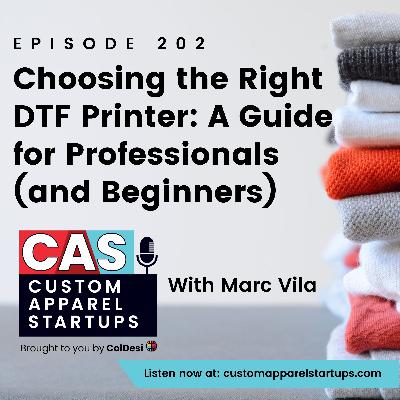
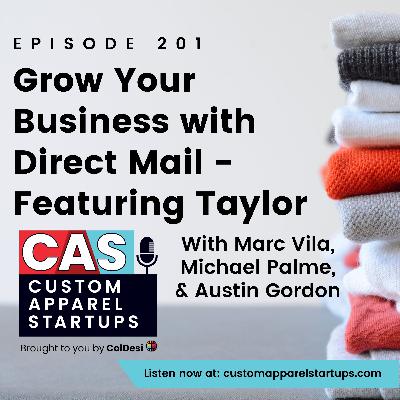
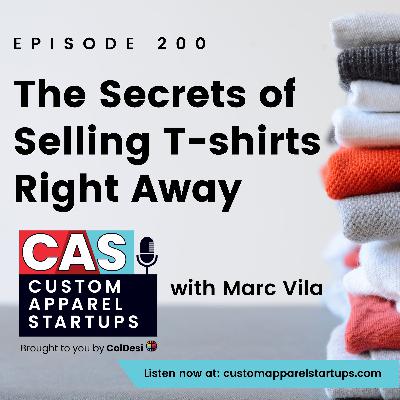

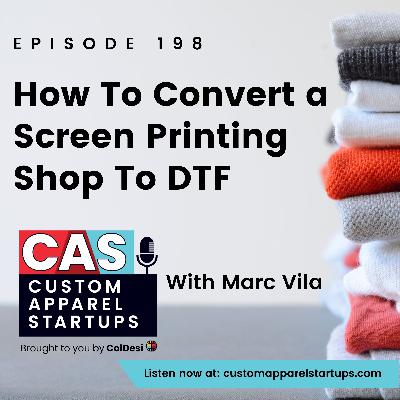
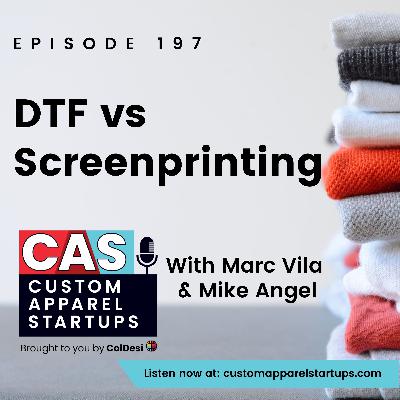

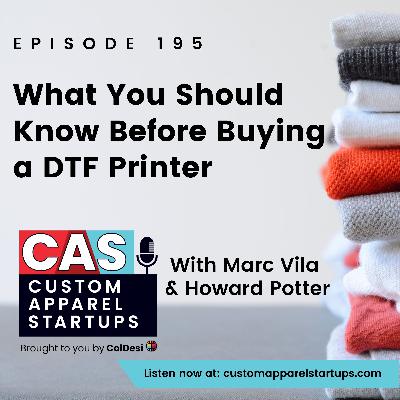
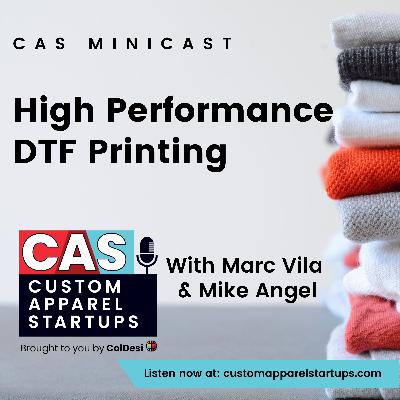

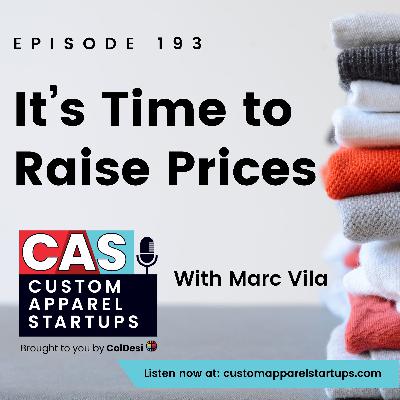






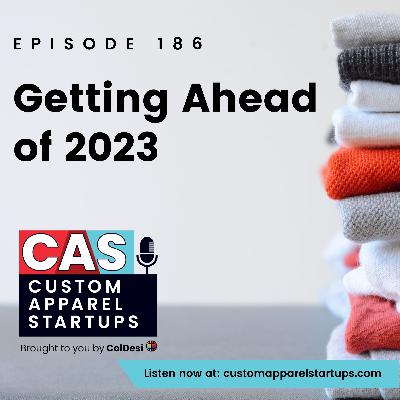
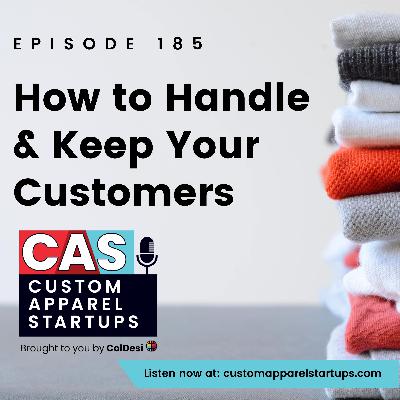



what do you think about importing goods as a startup option? using imported goods can help grow a business in several ways. First, imported goods can provide access to unique or high-quality products that can attract new customers and enhance a company's image. Second, imported goods may be more affordable, allowing the business to improve its competitiveness and increase profits. The third aspect is that an expanded product line can help attract new customers and meet the needs of existing customers. When it comes to importing goods, the services of a broker such as clearit.ca https://clearit.ca/ can be helpful. Brokers are experienced in customs clearance and logistics and can facilitate the import process, facilitate interaction with customs authorities and ensure compliance with necessary rules and regulations. Clearit.ca can provide support and expertise in import operations, which can save time and reduce risks to the business, allowing it to focus on its development.